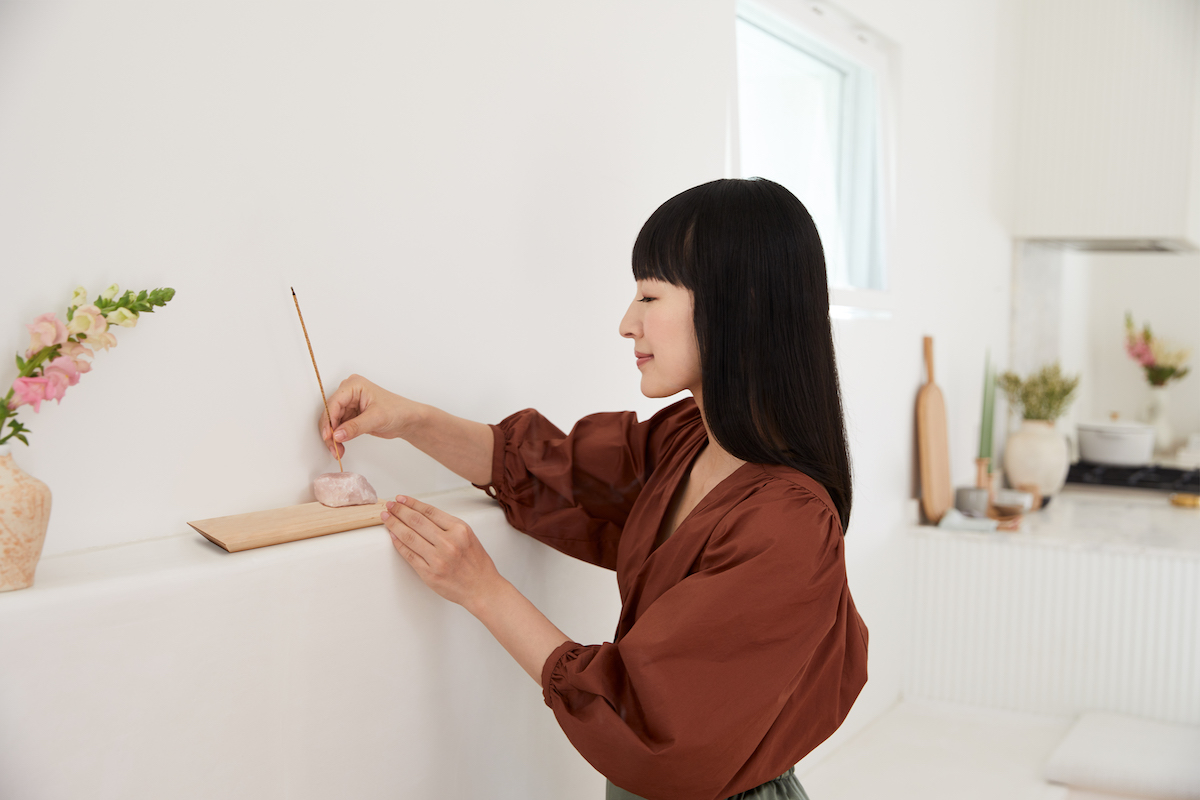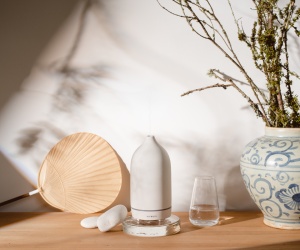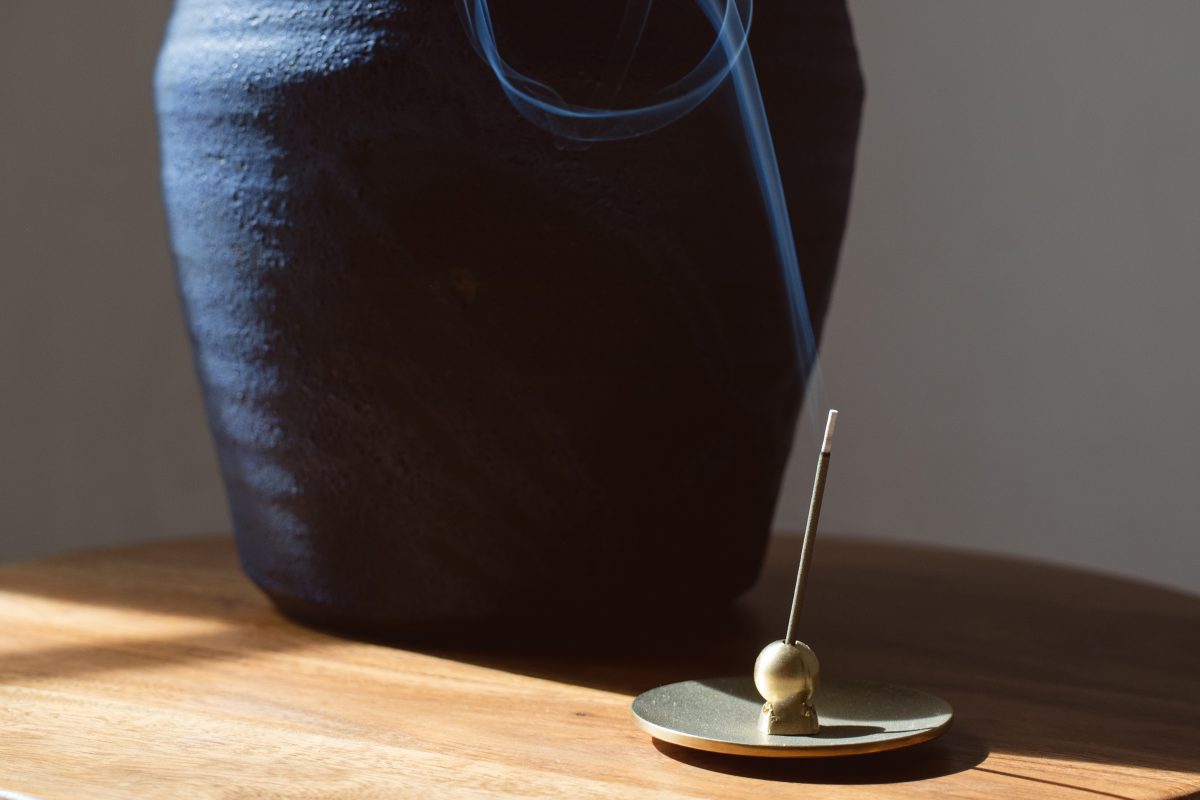Legend has it that Awaji Island, the birthplace of Japanese incense, was the first island formed in the world — born out of the swirling whirlpools of the Seto Inland Sea. Over 1,000 years ago, in 595 A.D., those same waters carried a log of jinko, or agarwood, to shore. When Awaji inhabitants burned it, a sweet, fragrant smoke unfurled, rising above the island — and the legacy of Japanese incense began.
Today, incense plays a vital role in Japanese culture. Wood incense, or koboku, is burned in spiritual ceremonies, while sticks of Japanese incense are burned at home to cleanse the air and brighten the spirit. Incense is used during meditations, morning and evening routines, or simply lit before guests arrive to make the home feel welcoming. Each piece carries a memory of the first incense made and burned in Awaji.
Every year, Marie travels back to Japan to connect with her roots. When she has time, she visits the many onsen, or Japanese hot springs, and shrines where incense encourages relaxation, rest and self-reflection. At home, Marie burns incense to bring more mindfulness into her everyday routine — and to honor the history and traditions that inspired the KonMari Method™.
The History of Japanese Incense
Every corner of Japanese history is fragrant with incense. Samurai once burned koboku to perfume the inside of their armor because they believed it would give them courage and strength. In Awaji, incense was burned as a gift to the gods in Izanagi-Jingu Shrine — the oldest shrine of Japan — and carried to Sumoto Castle as a gift to royalty.
Incense was not only discovered on Awaji but mastered there — it is where kōdō, or the way of incense, first began. Craftsmen, known as koh-shi, discovered the process of turning scented wood into the Japanese stick incense we know today. Koh-shi blended natural ingredients with water to create a fragrant paste, then rolled it by hand into thin, delicate sticks before leaving it to dry.
Unlike Indian incense, traditional Japanese sticks do not include bamboo for support — instead, each piece is made from only resin, which when lit, fills the air with transcendent scent. Japanese incense burns at the same pace and strength as other styles, but its history is unique to Awaji.
Awaji’s koh-shi have maintained their skills and rituals for hundreds of years. Several of the island’s modern incense manufacturers have been in operation since the Edo Period in the late 1850s. As a result, the Japanese incense produced today feels timeless — yet, it grounds us in our present moment.
How to Build an Incense Practice
The KonMari philosophy considers a decluttered mind as important as a tidy home. By introducing an incense ritual into our lives, we make more space for mindfulness. Over time, this makes us better coworkers, children, partners and parents.
Marie typically begins each morning by burning incense to cleanse the air and clear her thoughts. These first moments help her better prepare for upcoming tidying festivals and other KonMari Method™ projects.
You can introduce the spirit of kōdō — and the history of Awaji Island — into your daily routine as well. To create the ideal incense ritual for your goals, you’ll want to explore what sparks the most joy for you. To decide where to begin, imagine your ideal life. How can scent enhance that vision? However you choose to introduce incense into your life, let this new ceremony lift you, like a wisp of smoke, to a place of clarity and joy.










